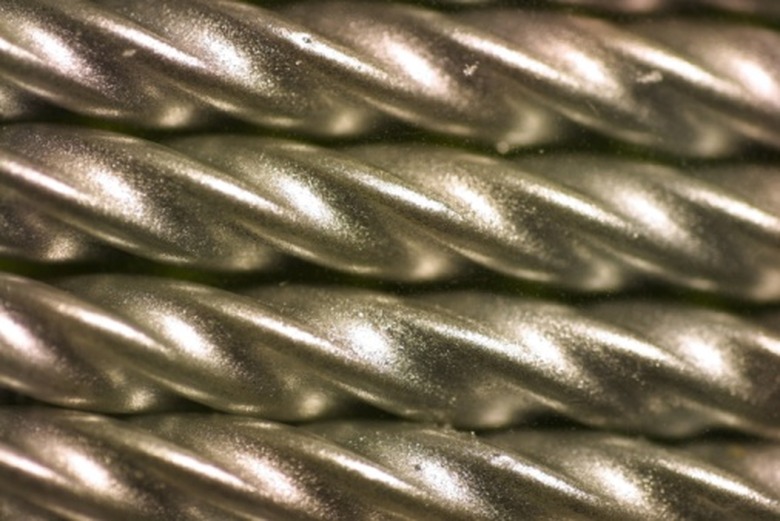How To Identify Rebar Grades
Tip
Keep a copy of a rebar identification chart handy for quick reference of other marking styles.
Rebar is added to concrete to give strength and durability. Concrete projects such as footings, slabs and block walls require rebar. You must install the correct size and grade of rebar on your concrete job, depending on the circumstances and the local building code. You can determine the rebar's grade prior to installation by observing the markings on the rebar. These markings usually use a line system or a number system.
Line System
Step 1
Locate the markings stamped on the rebar. The marks are stamped between the lines running across the diameter of the rod. You will see three markings. The first and third markings are letters indicating the manufacturer and the type of steel, respectively. The second mark is a number indicating the rebar size.
Step 2
Examine the markings. For example the markings "Z," "4," "S," identifies the piece as a number 4 rebar, made of steel by a manufacturer designated as "Z." If these are the only marks present, then this is a grade 40 bar.
Step 3
Look at the rebar for a line running the length of the rebar between the outside ribs. This line is another type of grade mark. This mark, in addition to the markings above, identifies the rod as a grade 60 bar. This is the only mark differentiating a grade 40 bar from a grade 60 bar with the line system.
Number system
Step 1
Read the markings on the rebar. The three markings stamped onto the bar's surface indicate the manufacturer, size and type of metal, respectively. These letters and numbers are similar to the line system.
Step 2
Check the rebar for additional marks. A grade 60 rebar is stamped with "60" or a "6" with a "0" underneath. These marks follow the markings listed above.
Step 3
Consult a rebar identification chart for other types of marks. Foreign made rebar may be marked differently.
